Where is London, Ontario
London, Ontario is a city located in southwestern Ontario, Canada. Situated along the Thames River, it is known for its rich history, vibrant culture, and diverse community.
Founded in 1826, London has grown into a significant urban center and the 11th largest city in Canada by population. It serves as a regional hub for various sectors, including education, healthcare, business, and the arts.
The city is home to several esteemed educational institutions, including the University of Western Ontario and Fanshawe College. These institutions attract students from all over the world and contribute to London’s reputation as a center for higher learning.
London, Ontario boasts a thriving healthcare sector, with numerous hospitals and medical research facilities. The city’s hospitals provide quality care and contribute to advancements in healthcare.
Culturally, London offers a vibrant arts scene, with numerous theaters, galleries, and music venues. The city hosts various festivals and events throughout the year, showcasing its cultural diversity and creative talent.
Nature enthusiasts can enjoy the city’s numerous parks, gardens, and recreational areas. Springbank Park, for example, is a popular destination for outdoor activities, featuring walking trails, picnic spots, and the Thames River for boating and fishing.
With its strategic location between Toronto and Detroit, London, Ontario, benefits from its proximity to larger urban centers while still maintaining a distinct character and sense of community.
History of London, Ontario
The history of London, Ontario dates back to its founding in 1826 by Colonel Thomas Talbot. The city’s establishment was part of Talbot’s vision to create a prosperous settlement along the Thames River. Talbot named the settlement after London, England, his hometown.
In the early years, London served as a crucial transportation hub due to its location along the Thames River and proximity to important travel routes. The city quickly developed as a center for trade and commerce, attracting settlers and businesses.
During the 19th century, London experienced significant growth and expansion. It became a regional center for agriculture, manufacturing, and industry. The construction of railways in the mid-19th century further enhanced the city’s connectivity, facilitating the transportation of goods and people.
London played a significant role in the development of education in Canada. In 1878, the city became the site of the founding of the University of Western Ontario (now Western University). The university has since become a renowned institution, contributing to the intellectual and cultural fabric of the city.
Over the years, London has faced various challenges and experienced periods of economic fluctuation. However, it has demonstrated resilience and adaptability in overcoming these obstacles.
Today, London, Ontario, is a vibrant city with a diverse population and a robust economy. It continues to evolve as a center for education, healthcare, and innovation. The city’s rich history can be seen in its historic architecture, museums, and cultural landmarks, which provide glimpses into its past.
Things to Do in London Ontario
Here are 10 things to do in London, Ontario:
- Visit the Museum London
- Take a stroll in Victoria Park
- Attend a performance at the Grand Theatre
- Explore the Covent Garden Market
- Visit the Fanshawe Pioneer Village
- Discover nature at Springbank Park
- Explore the Banting House National Historic Site
- Experience the London Children’s Museum
- Enjoy live music at Aeolian Hall
- Indulge in culinary delights in the city’s diverse food scene
1) Visit the Museum London
Museum London is a cultural institution located in the heart of London, Ontario, Canada. With a rich collection of art and artifacts, it serves as a hub for promoting and celebrating the region’s artistic and historical heritage.
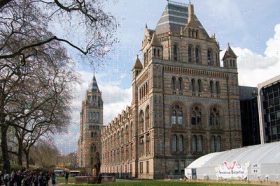
Nestled on the bank of the Thames River, Museum London showcases an impressive collection of artworks, historical artifacts, and archival materials. The museum’s mission is to inspire creativity, engage visitors, and foster a deeper understanding of the region’s cultural identity. Its commitment to preserving and interpreting the art and history of London and Southwestern Ontario is evident through its diverse exhibitions and educational programs.
One of the main highlights of Museum London is its extensive collection of Canadian art. From traditional to contemporary works, the museum boasts an array of paintings, sculptures, and multimedia installations that reflect the breadth and depth of Canadian artistic expression. Visitors can explore the evolution of Canadian art and gain insights into the local art scene through the museum’s permanent and rotating exhibitions.
The museum also actively supports and promotes regional artists. It features exhibitions that showcase the works of emerging and established artists from London and the surrounding area. This commitment to supporting local talent creates a vibrant and dynamic artistic community, fostering creativity and cultural exchange.
Beyond visual arts, Museum London also houses an impressive collection of historical artifacts and archival materials. These artifacts provide a glimpse into the history and heritage of the region. From Indigenous artifacts to artifacts related to early settlers, the collection offers a comprehensive narrative of the area’s past. The museum’s skilled curators and researchers work diligently to preserve and interpret these artifacts, making them accessible to the public and future generations.
In addition to its collection, Museum London hosts a range of temporary exhibitions that explore diverse themes and artistic mediums. These exhibitions often feature collaborations with other cultural institutions and bring in works from renowned national and international artists. By showcasing these exhibitions, the museum fosters dialogue, encourages critical thinking, and exposes visitors to a variety of artistic styles and perspectives.
Moreover, Museum London serves as an educational resource for the community. It offers a range of engaging programs and events catered to diverse audiences, including art workshops, lectures, and guided tours. These initiatives provide opportunities for visitors of all ages to deepen their understanding of art and history while fostering a sense of connection to the local community.
Beyond its artistic and educational contributions, Museum London plays a vital role in the social fabric of the city. It serves as a gathering place, bringing people together to appreciate and celebrate culture. The museum acts as a catalyst for community engagement and collaboration, hosting events that showcase local talent and cultural traditions. It also provides a platform for dialogue and discussion on important social issues through its programming and exhibitions.
2) Take a stroll in Victoria Park
Victoria Park, located in the heart of London, Ontario, is a cherished green oasis that captivates visitors with its natural beauty and rich history.
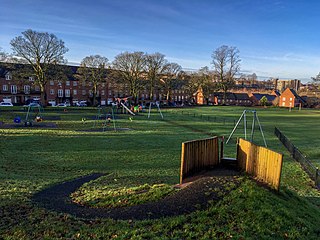
Covering an impressive 18 acres, Victoria Park has been a beloved gathering place for over a century. It serves as a peaceful retreat from the hustle and bustle of the city, offering a serene and picturesque setting for relaxation and recreation. The park’s central location makes it easily accessible to residents and visitors, attracting individuals of all ages and backgrounds.
One of the key features of Victoria Park is its stunning landscape design. The park boasts lush green lawns, vibrant flower beds, and majestic trees that provide shade and tranquility. Whether taking a leisurely stroll, having a picnic, or simply finding a quiet spot to read a book, visitors are surrounded by nature’s beauty.
The centerpiece of Victoria Park is its iconic circular fountain, which serves as a focal point and a symbol of the park. The fountain adds a touch of elegance and grandeur to the surroundings, particularly during the warmer months when it dances with water and creates a soothing ambiance.
Beyond its natural beauty, Victoria Park offers a range of amenities and attractions. The park features winding pathways that invite visitors to explore its nooks and crannies, discover hidden gardens, and stumble upon charming statues and monuments that pay homage to significant historical figures. These elements add an element of discovery and intrigue to the park experience.
Throughout the year, Victoria Park hosts a variety of events and festivals that bring the community together. From music concerts and cultural celebrations to art shows and food fairs, the park buzzes with energy and excitement. These events provide opportunities for locals and visitors to connect, celebrate diversity, and experience the vibrant spirit of London.
Victoria Park is not only a place for leisure and entertainment but also a site of historical significance. It was officially opened in 1874 and has witnessed numerous milestones in the city’s history. Over the years, the park has evolved, reflecting the changing needs and aspirations of the community. Its heritage is preserved through the presence of heritage buildings and monuments that offer glimpses into the past.
In addition to its natural and historical allure, Victoria Park offers recreational activities for visitors of all ages. The park includes playgrounds for children, sports fields for various outdoor activities, and designated areas for picnics and barbecues. Whether engaging in a friendly game of soccer, flying a kite, or simply enjoying quality time with loved ones, the park provides ample space and facilities to cater to diverse interests.
3) Explore the Covent Garden Market
Covent Garden Market, nestled in the heart of London, Ontario, is a vibrant and bustling marketplace that has been a centerpiece of the city’s cultural and culinary scene for over 180 years. We explore into the significance of Covent Garden Market, its history, offerings, and the unique experiences it provides to visitors.
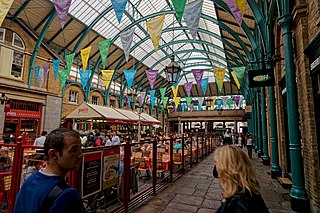
With its origins dating back to 1845, Covent Garden Market has deep historical roots. Named after the renowned market in London, England, it has served as a hub of commerce and community since its inception. Over the years, the market has evolved, adapting to the changing needs and tastes of the local population while preserving its authentic charm and character.
One of the key attractions of Covent Garden Market is its wide array of fresh produce and artisanal goods. The market is a haven for food enthusiasts, offering a cornucopia of fruits, vegetables, meats, cheeses, and baked goods. Farmers, local producers, and artisans gather here to showcase their finest products, providing an opportunity for visitors to connect with the region’s agricultural heritage and support local businesses.
Beyond the abundant food offerings, Covent Garden Market is a treasure trove of specialty shops and boutiques. From charming boutiques selling unique clothing, accessories, and handmade crafts to specialty stores offering spices, teas, and international ingredients, the market is a haven for those seeking one-of-a-kind treasures and culinary delights. Exploring the market’s nooks and crannies is like embarking on a delightful journey of discovery, with surprises awaiting around every corner.
Moreover, Covent Garden Market is not just a place to shop—it’s a culinary destination. The market houses a variety of eateries and cafes that cater to different tastes and preferences. From cozy coffee shops and bakeries serving freshly baked goods to international food stalls and restaurants offering a diverse range of cuisines, visitors can embark on a culinary adventure that satisfies every palate. The market’s lively atmosphere and communal seating areas create a vibrant and convivial ambiance, making it an ideal spot to gather with friends and enjoy a delicious meal.
Covent Garden Market is not just about food and shopping—it’s also a venue for community engagement and cultural experiences. The market hosts a multitude of events throughout the year, including farmers’ markets, cooking demonstrations, live music performances, art exhibits, and seasonal festivals. These events create a lively and festive atmosphere, attracting locals and visitors alike. They provide opportunities to connect with the community, celebrate local talent, and immerse oneself in the vibrant spirit of London.
4) Attend a performance at the Grand Theatre
The Grand Theatre in London, Ontario is an iconic cultural institution that has been captivating audiences for over a century. With its rich history, stunning architecture, and diverse programming, the Grand Theatre stands as a testament to the power of live performance and its ability to inspire, entertain, and provoke thought. We discover into the significance of the Grand Theatre, its historical background, the allure of live performances, and the unique experiences it offers to theatergoers.
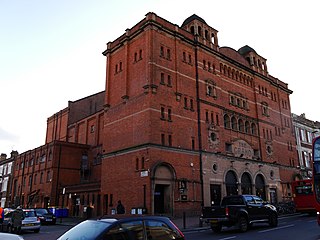
Situated in the heart of downtown London, the Grand Theatre is a magnificent architectural gem that exudes grandeur and elegance. Built in 1901, the theater showcases a blend of Victorian and Edwardian architectural styles, boasting ornate detailing, intricate moldings, and a majestic facade. Stepping inside, patrons are transported to a world of theatrical enchantment, where the history of the stage comes alive.
The Grand Theatre has played a vital role in the cultural fabric of London and Southwestern Ontario. It has been a gathering place for theater enthusiasts, offering a wide range of productions that cater to diverse tastes and interests. From classic plays and musicals to cutting-edge contemporary works, the theater’s programming reflects the richness and diversity of the performing arts.
Attending a performance at the Grand Theatre is a multisensory experience that engages the imagination and stirs the emotions. From the moment the curtain rises, the theater comes alive with a symphony of lights, music, and talented performers. The energy and anticipation in the air create a palpable excitement that permeates the auditorium.
Live theater offers a unique form of storytelling that transcends other art forms. It allows audiences to witness the raw emotions, nuances, and vulnerability of the actors in real-time. The immediacy and authenticity of the performances create a profound connection between the performers and the audience, fostering empathy, introspection, and a shared human experience.
Beyond the artistic merits, the Grand Theatre plays a crucial role in nurturing and supporting the local arts community. It serves as a platform for local talent to showcase their skills, collaborate with renowned artists, and gain exposure. The theater’s commitment to fostering emerging artists and providing mentorship opportunities contributes to the growth and vibrancy of the arts scene in London and the surrounding region.
Moreover, the Grand Theatre is more than just a performance venue—it is a space for community engagement and dialogue. It hosts pre-show discussions, post-show talkbacks, and educational programs that deepen the audience’s understanding and appreciation of the performances. These initiatives create a space for reflection, critical thinking, and conversation, encouraging theatergoers to delve deeper into the themes and ideas explored on stage.
The Grand Theatre’s impact extends beyond its role as a cultural institution. It is an economic driver for the city, attracting visitors from near and far who contribute to the local economy through dining, accommodation, and other related expenditures. The theater’s presence also enhances the overall quality of life in the community, enriching the social and cultural landscape of London.
5) Visit the Fanshawe Pioneer Village
Fanshawe Pioneer Village, nestled in London, Ontario, is a captivating living history museum that offers visitors a journey back in time to experience the daily life of early settlers in the region. We explore the significance of Fanshawe Pioneer Village, its historical background, the immersive experiences it provides, and its role in preserving and celebrating the region’s pioneer heritage.

Fanshawe Pioneer Village is a testament to the rich history and heritage of the area. Established in 1959, the village showcases over 30 historical buildings that have been carefully restored and furnished to reflect the early settlement period of the 19th century. These buildings, including homes, a schoolhouse, a church, a blacksmith shop, and a sawmill, offer a glimpse into the past and provide a tangible connection to the lives of the pioneers who shaped the community.
Visiting Fanshawe Pioneer Village is like stepping into a living time capsule. As visitors wander through the village’s streets, they are transported back to a simpler era, where the rhythm of life was dictated by the seasons and the tasks necessary for survival. The authentic setting, complete with period-appropriate costumes and skilled interpreters, brings the past to life, creating an immersive and educational experience.
One of the main highlights of Fanshawe Pioneer Village is the opportunity to interact with knowledgeable and passionate historical interpreters. These interpreters play the roles of pioneers, sharing stories, demonstrating traditional crafts and skills, and providing insight into the challenges and triumphs of early settlers. Visitors can engage in conversations, ask questions, and gain a deeper understanding of the customs, traditions, and daily life of the pioneer era.
Throughout the village, a wide range of activities and demonstrations take place, offering visitors a chance to participate in the various aspects of pioneer life. They can try their hand at traditional crafts such as blacksmithing, weaving, and candle making, gaining an appreciation for the skills and ingenuity required to sustain a pioneer community. Seasonal activities, such as harvesting crops, cooking over an open hearth, and tending to farm animals, provide a hands-on experience that fosters a deeper connection to the land and the pioneers’ way of life.
Fanshawe Pioneer Village also hosts a variety of special events and festivals throughout the year. These events showcase different aspects of pioneer culture, including music, dance, traditional games, and culinary traditions. Whether it’s a harvest festival, a historical reenactment, or a holiday celebration, these events offer a festive and engaging atmosphere that brings the community together and provides a memorable experience for visitors of all ages.
The village’s commitment to preserving and celebrating the region’s pioneer heritage extends beyond the physical structures and demonstrations. Fanshawe Pioneer Village actively engages in historical research, archival work, and artifact preservation to ensure the accuracy and authenticity of the village’s interpretation. This dedication to historical accuracy ensures that future generations can continue to learn from and appreciate the pioneer heritage of the region.
Fanshawe Pioneer Village also serves as an educational resource for schools and community groups. It offers a range of educational programs and workshops designed to provide hands-on learning experiences that align with the school curriculum. These programs give students the opportunity to step into the shoes of a pioneer, fostering a deeper understanding and appreciation of local history.
6) Discover nature at Springbank Park
Springbank Park, located in London, Ontario, is a picturesque urban oasis that invites visitors to immerse themselves in the beauty of nature. With its sprawling green spaces, scenic walking trails, and tranquil riverfront, the park offers a refreshing escape from the hustle and bustle of city life. We explore the significance of Springbank Park, its natural wonders, recreational opportunities, and its role in fostering a connection with the outdoors.

Springbank Park is a place of natural beauty that celebrates the diverse ecosystems of the region. Spanning over 300 acres along the Thames River, the park boasts lush meadows, dense woodlands, and serene waterways. The park’s carefully maintained landscape not only provides a stunning backdrop for outdoor activities but also serves as a haven for local flora and fauna.
One of the park’s key attractions is its extensive network of walking and cycling trails. These well-maintained pathways meander through the park, offering visitors the opportunity to explore its natural wonders at their own pace. Whether it’s a leisurely stroll or an invigorating jog, the trails provide a chance to reconnect with nature, breathe in the fresh air, and enjoy the serenity of the surroundings.
The Thames River, which runs through Springbank Park, is a focal point of natural beauty and recreational activities. Visitors can enjoy a leisurely paddle along the calm waters, rent a canoe or kayak, or simply relax on the riverbank and soak in the peaceful ambiance. The river also attracts a variety of wildlife, including ducks, geese, and turtles, providing nature enthusiasts with the opportunity to observe and appreciate the local ecosystem.
For those seeking a more active outdoor experience, Springbank Park offers a range of recreational facilities. The park features sports fields, picnic areas, and playgrounds, providing ample space for families, friends, and sports enthusiasts to engage in various activities. From soccer and baseball to frisbee and kite flying, the park offers something for everyone, promoting physical fitness, social interaction, and a sense of community.
Springbank Park is not just a place for outdoor activities—it also serves as a venue for cultural events and community gatherings. Throughout the year, the park hosts concerts, art exhibits, festivals, and other special events that bring people together and celebrate the diversity and vibrancy of the local community. These events foster a sense of belonging and create lasting memories for residents and visitors alike.
The park’s natural setting also provides a unique opportunity for environmental education and awareness. Springbank Park offers interpretive programs, guided nature walks, and workshops that focus on ecological conservation, sustainability, and the importance of preserving natural habitats. These initiatives promote a deeper understanding of the local ecosystem, inspire environmental stewardship, and encourage individuals to become active participants in protecting the natural world.
Moreover, Springbank Park’s accessibility and proximity to urban areas make it an ideal destination for individuals of all ages and abilities. The park offers wheelchair-accessible paths, designated picnic areas, and inclusive playgrounds, ensuring that everyone can enjoy the beauty and serenity of the outdoors. This commitment to inclusivity allows for the park to be a gathering place that fosters connection and appreciation for nature among a diverse range of individuals.
7) Explore the Banting House National Historic Site
The Banting House National Historic Site, located in London, Ontario, holds significant historical and cultural importance as the birthplace of a groundbreaking medical discovery. We explore the significance of the Banting House, its historical background, the legacy of Sir Frederick Banting, and the role the site plays in preserving his memory and the history of medical science.
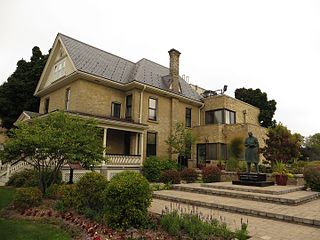
The Banting House National Historic Site is a humble yet significant house that stands as a testament to one of the most remarkable achievements in medical history—the discovery of insulin. The site holds the distinction of being the place where Sir Frederick Banting, alongside his colleague Charles Best, conceived the idea that revolutionized the treatment of diabetes.
The historical significance of the Banting House lies in its association with Sir Frederick Banting, a Canadian physician and scientist. In 1920, Banting was inspired by the idea of isolating a hormone that could regulate blood sugar levels. Through extensive research and experimentation, he and his team discovered insulin in 1921, a monumental breakthrough that would save countless lives and transform the treatment of diabetes worldwide.
The Banting House itself is an unassuming two-story brick building that retains its original charm and character. Step inside, and you will find the space meticulously preserved to resemble Banting’s former residence. Visitors can explore the various rooms, including Banting’s study, where the idea of insulin first took shape, and the bedroom where he famously woke up with the concept of isolating the hormone.
The museum within the Banting House National Historic Site is a treasure trove of artifacts, documents, and exhibits that tell the story of Banting’s life and the evolution of insulin therapy. Visitors can view original laboratory equipment, personal belongings, and written accounts that provide insights into the scientific journey and the immense impact of the discovery.
One of the most compelling aspects of the Banting House is its ability to transport visitors back in time, immersing them in the era when Banting made his groundbreaking discovery. The preservation of the house and its meticulous restoration efforts allow visitors to experience the space as it would have been during Banting’s time. This immersive experience creates a powerful connection to the past and offers a glimpse into the scientific ingenuity and determination that changed the course of medicine.
The Banting House National Historic Site also serves as an educational resource, providing a platform for learning, research, and dialogue. The museum offers guided tours, educational programs, and outreach initiatives that engage visitors of all ages. These programs explore the scientific and social impact of the discovery of insulin, shedding light on the ongoing efforts to improve diabetes care and raising awareness about the importance of medical research.
8) Experience the London Children’s Museum
The London Children’s Museum, situated in London, Ontario, is a vibrant and interactive space dedicated to providing children with engaging and educational experiences. With its hands-on exhibits, imaginative play areas, and diverse programming, the museum offers a stimulating environment where children can learn, explore, and unleash their creativity. We explore into the significance of the London Children’s Museum, its unique features, the educational opportunities it provides, and its role in fostering a love of learning and discovery in young minds.

The London Children’s Museum is a place of wonder and excitement for children of all ages. Designed specifically to cater to their interests and developmental needs, the museum aims to create an environment that sparks curiosity, nurtures imagination, and encourages hands-on learning. Its exhibits are carefully crafted to engage children in a range of educational and interactive activities, making the museum a hub of exploration and discovery.
One of the distinctive features of the London Children’s Museum is its emphasis on interactive play. The museum offers a wide variety of play areas, each designed to stimulate different aspects of child development. From imaginative role-playing in a pretend grocery store or construction site to hands-on experiments in the science gallery, children have the opportunity to engage in activities that promote problem-solving, social interaction, and cognitive development.
The museum’s exhibits are thoughtfully curated to provide children with a diverse range of learning experiences. Whether it’s exploring the wonders of nature, delving into the world of science and technology, or immersing themselves in the arts and culture, children can embark on a journey of discovery in a safe and stimulating environment. Each exhibit is designed to be interactive and age-appropriate, allowing children to learn through play and hands-on exploration.
The London Children’s Museum also offers a variety of educational programs and workshops that complement its exhibits. These programs provide opportunities for children to delve deeper into specific areas of interest, engage with expert educators, and participate in hands-on learning experiences. From science experiments and art classes to storytelling sessions and cultural celebrations, the museum’s programs aim to inspire a love of learning, foster creativity, and broaden children’s horizons.
Beyond its exhibits and programs, the London Children’s Museum serves as a community hub, fostering connections and promoting social development. The museum often hosts special events and collaborations with local organizations, schools, and community groups. These events not only offer fun and memorable experiences for children and their families but also create opportunities for community engagement and collaboration.
Moreover, the London Children’s Museum is committed to inclusivity and accessibility. The museum strives to provide a welcoming environment for children of all abilities. It offers sensory-friendly days, accessibility features, and specialized programming to ensure that every child can fully participate and enjoy the museum’s offerings. This dedication to inclusivity promotes understanding, empathy, and appreciation for diversity among young visitors.
The museum’s impact extends beyond its walls. The London Children’s Museum actively collaborates with schools and educational institutions, offering outreach programs that bring the museum experience to classrooms and community centers. These outreach initiatives aim to reach a wider audience, particularly those who may face barriers to visiting the museum, and provide them with enriching educational experiences.
9) Enjoy live music at Aeolian Hall
Aeolian Hall, located in London, Ontario, is a renowned and cherished venue that offers an exceptional live music experience. With its rich history, stunning architecture, and commitment to showcasing diverse musical genres, Aeolian Hall has become a cultural hub that delights both performers and audiences alike. This essay will delve into the significance of Aeolian Hall, its historical background, its role in promoting music and the arts, and the immersive experience it provides for music lovers.
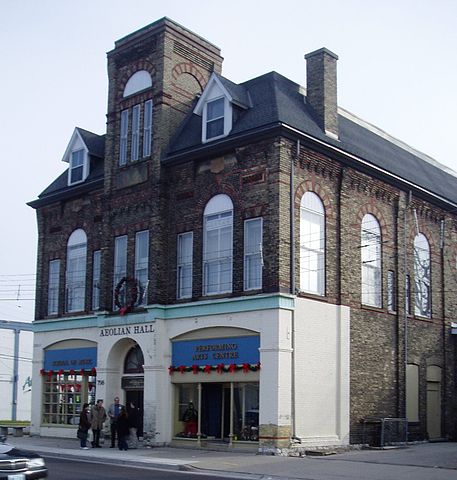
Aeolian Hall is a historic venue that dates back to its establishment in 1883. Originally built as a town hall, it has since evolved into a cherished concert hall that has played a vital role in the city’s cultural landscape. The hall’s architectural beauty, with its ornate details and exceptional acoustics, adds to the allure of the musical performances held within its walls.
One of the notable aspects of Aeolian Hall is its dedication to showcasing a wide range of musical genres and styles. From classical and jazz to folk and world music, the venue embraces diversity and strives to create a platform for both established and emerging artists. This commitment to inclusivity has made Aeolian Hall a vibrant and welcoming space for musicians and music enthusiasts from all walks of life.
Aeolian Hall has a rich history of hosting exceptional musical performances. Over the years, it has welcomed renowned artists and ensembles from around the world, as well as providing a stage for local talent to shine. From solo recitals to full orchestral concerts, the hall offers a diverse array of musical experiences that cater to a wide range of tastes and preferences.
Beyond its role as a performance venue, Aeolian Hall is deeply committed to community engagement and music education. The hall houses the Aeolian Education Program, which provides music lessons and workshops to individuals of all ages and abilities. Through this program, Aeolian Hall aims to nurture a love for music, develop talent, and provide accessible opportunities for individuals to explore and deepen their musical skills.
Aeolian Hall also takes pride in its social impact and community outreach initiatives. The hall hosts fundraising events and collaborations with local organizations to support charitable causes and raise awareness about important social issues. By using the power of music as a catalyst for positive change, Aeolian Hall actively contributes to the well-being of the community and encourages a sense of shared responsibility.
The immersive experience at Aeolian Hall goes beyond the musical performances. The venue’s intimate setting creates an atmosphere that allows for a unique connection between the artists and the audience. The proximity of the stage and the exceptional acoustics enhance the experience, enabling the audience to fully immerse themselves in the music and feel the raw emotions conveyed by the performers.
Aeolian Hall’s impact extends beyond its physical space. The venue actively collaborates with other arts organizations, festivals, and educational institutions to foster a thriving arts community. These partnerships result in a rich tapestry of artistic events and collaborations that contribute to the cultural vibrancy of London and promote the growth and appreciation of the arts.
10) Indulge in culinary delights in the city’s diverse food scene
London, Ontario, is a city that prides itself on its diverse and thriving food scene. With an abundance of culinary delights from around the world, the city offers a gastronomic adventure that caters to all tastes and preferences. From trendy cafes to upscale restaurants and international eateries, London’s food scene is a testament to its cultural diversity and culinary creativity. This essay will explore the significance of London’s food scene, the variety of dining options available, the local culinary talents, and the overall experience of indulging in the city’s diverse culinary delights.

London’s food scene is a vibrant tapestry of flavors, reflecting the multicultural fabric of the city. The presence of diverse communities has led to a rich fusion of culinary traditions, resulting in a wide range of cuisines from around the world. From Asian, Middle Eastern, and European to Caribbean, African, and South American, the city’s dining options are a reflection of the global palate.
One of the notable aspects of London’s food scene is the plethora of dining options available. Whether you’re looking for a casual and quick bite, a fine dining experience, or something in between, the city has something to offer for every occasion and budget. From food trucks and trendy pop-up eateries to charming cafes and award-winning restaurants, the city’s culinary landscape is diverse and exciting.
London is also home to a talented community of chefs and culinary entrepreneurs who bring their passion and creativity to the table. Many local chefs have gained recognition for their innovative menus, use of local ingredients, and commitment to culinary excellence. These culinary talents contribute to the vibrancy of the food scene, infusing their dishes with unique flavors and pushing the boundaries of traditional cuisine.
Exploring London’s food scene is not only about savoring delicious meals but also about immersing oneself in the local culture. The city offers food festivals, farmers’ markets, and culinary events that celebrate local produce, culinary traditions, and the vibrant community of food enthusiasts. These events provide opportunities to engage with local chefs, discover new flavors, and learn about the stories behind the dishes.
Moreover, London’s food scene goes beyond just satisfying taste buds. Many establishments prioritize sustainability, supporting local farmers, and using organic and ethically sourced ingredients. This commitment to sustainability aligns with the growing awareness of the importance of responsible food practices and adds an extra layer of appreciation to the culinary experience.
London’s food scene also contributes to the city’s social fabric, fostering connections and creating spaces for community gatherings. Restaurants and cafes serve as meeting points where friends, families, and colleagues come together to share a meal and create lasting memories. The warm and welcoming atmosphere of these establishments adds to the overall dining experience, making it more than just a culinary adventure.
In addition to the diverse range of cuisines available, London boasts a thriving craft beer and wine culture. Local breweries and wineries offer unique and flavorful beverages that perfectly complement the culinary offerings. Pairing a delicious meal with a locally brewed beer or a glass of regional wine adds an extra dimension to the dining experience, allowing patrons to fully appreciate the city’s culinary and beverage creations.








